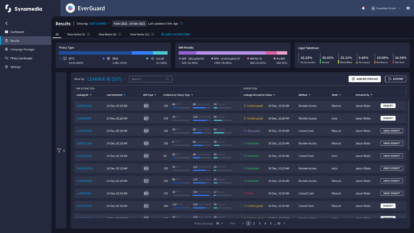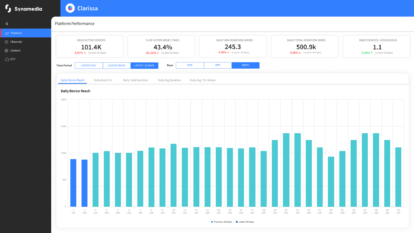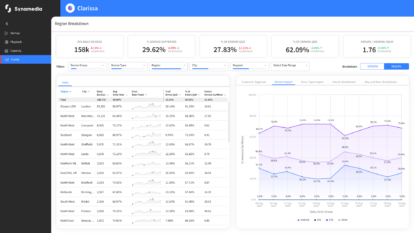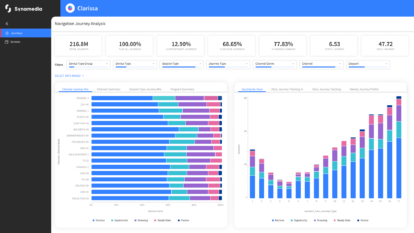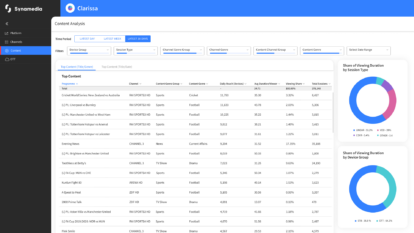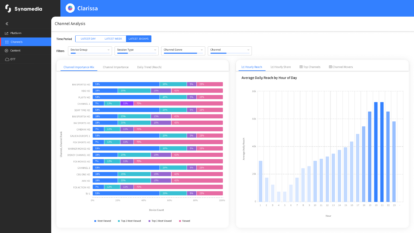Addressable advertising is already enabling advertisers, content providers and pay TV operators to target specific audiences and deliver impactful results. But changes are coming, driven by the ongoing fragmentation of viewing and the introduction of new technology solutions. From Connected TV (CTV) to new targeting options, these are the key trends shaping the future of addressable advertising.
1. Unification
In terms of ad management, addressable advertising campaigns have typically operated in their silos — one for broadcast, another for streaming. This separation throws up a number of issues, such as duplication of effort and divided spend.
By unifying operations, pay TV operators and content providers can manage campaigns (from direct sell to programmatic) and audiences in one place, with less overhead as well as consistent execution and measurement across all screens. Spend, meanwhile, can be moved around easily and instantaneously, regardless of service, platform, or device. This, in turn, maximises the value of existing ad inventory.
2. Expanded programmatic advertising
Programmatic advertising will continue to become the standard for buying and selling digital advertising, enabling advertisers to target their ads more precisely and effectively. It’s constantly improving across linear and STBs.
Today’s automation and digitisation now offer advertisers multiple campaign types and innovative configurations, e.g. open and private auctions, preferred and reserved programmatic, direct sales. In this respect, programmatic is increasingly expanding automated buying options that provide flexibility in the marketplace while improving yield.
3. A greater focus on Connected TV
As more people cut the cord and switch to streaming services, and as more screens become connected, Connected TV presents a huge opportunity for advertisers. Many have already embraced this trend, and Emarketer suggests that “between 2021 and 2026, the US CTV ad market will more than double.”
More screens mean more precise impression tracking, which means more data. This increase in audience information will be a boon for advertisers and publishers. Although it creates an additional challenge – maintaining a balance between effective ad targeting and protecting user privacy with anonymised household, user and device-level profiles.
4. Increased convergence
The unification and CTV trends are steps along the path to convergence. One view of audiences. One platform for buying and reporting, with support processes that are single currency, single ID and single measurement. In the converged future of addressable advertising, customers will be able to coordinate campaigns across linear and digital to extend their reach, scale, and efficiency.
5. Less ‘addressable’, more ‘targeted’
This omnichannel reach will lean heavily on improved targeting technologies, which in turn rely on improved access to, and analysis of, audience data. The shift from cookies, device IDs and IP addresses to new ways of targeting will continue at speed, fuelled by stricter privacy controls and regulation.
Contextual targeting and AI-powered targeting, for example, have emerged as powerful tools for advertisers to reach their target audiences more effectively. Contextual targeting focuses on aligning ad campaigns with relevant content, while AI-powered targeting leverages artificial intelligence algorithms to analyse user data and preferences, enabling advertisers to deliver highly personalised, and relevant ads based on viewing habits.
A combination of lifestyle, transactional and geolocation-based data will help advertisers strike a balance between scale and granularity. Addressable advertising platforms will also look to non-audience-based targeting solutions, adding the capability to segment audiences by time of day, device types/brands/models/browsers/OS, and location.
6. Smarter measurement and forecasting
With access to deeper audience data, advertisers can improve campaign measurement, tracking the impact of ads across multiple platforms and devices. This opens up some interesting opportunities. For example, in addition to analysing impressions and visibility, it’s increasingly possible to get insights into how ads are consumed individually and in aggregate, looking at how ad load, ad duration, ad sequence, and ad break location affect viewership.
With this in mind, could we go beyond targeted ads and deliver truly personalised ones? Imagine serving the right ad, at the right time, on the right screen, during the right program to maximise impact. This is where addressable advertising is heading.
7. A modular platform approach
Ecosystem roles are constantly shifting in an evolving market where everyone wants a larger market share and there are vast amounts of revenue at stake. Rather than replacing one end-to-end ad tech platform with another, addressable advertising solutions will increasingly offer a more modular approach.
Such an incremental approach enables customers to plug in the components they need to move their businesses forward, such as ad routing and delivery, Server Side Ad Insertion and broadcast delivery to provide new capabilities without disrupting existing ecosystems and processes.
As you can see from this list, the addressable advertising industry is evolving rapidly, and staying ahead of the curve is essential for success. By embracing trends such as CTV, programmatic advertising, new targeting technologies, and the increasing importance of data, advertisers and media buyers can effectively engage their target audiences and maximise the impact of their campaigns.
To find out more about how to unify and unleash your addressable advertising potential, download our eGuide.
About the Author
Ben is a 20+ year veteran of the video industry, having worked in various roles including pre-sales, applications engineering, and technical marketing for Scientific-Atlanta, Cisco, and now Synamedia. He is currently the Product Marketing lead for the Synamedia Iris and Clarissa solutions. Ben holds a BS and master’s degree in Electrical Engineering from the Georgia Institute of Technology. In his spare time, Ben enjoys watching football, playing guitar, and nerding out over Marvel movies and Terry Pratchett novels.

